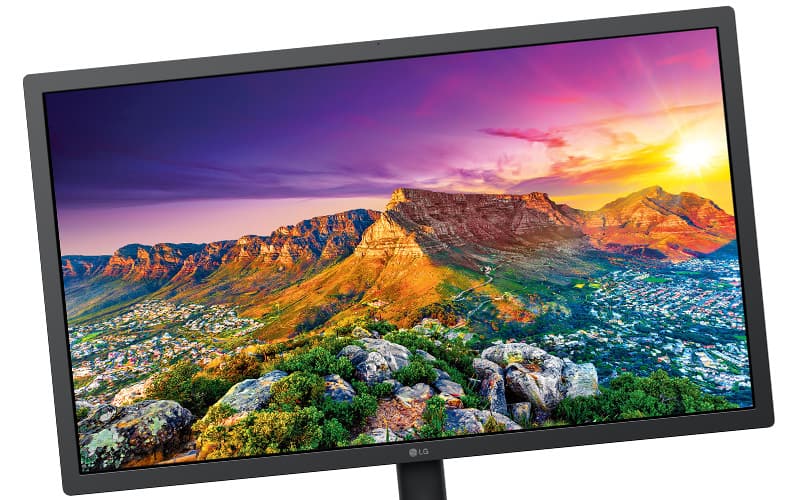How to get the most out of your monitor
Make your monitor the best it can possibly be
- Last Updated Jun 4, 2021

When you purchase a monitor for your PC setup, you’re pretty much getting what you’re given for its lifetime. However, there are some tips and tricks so you can get the most out of your monitor, making it potentially last longer, tailor it to suit your requirements, and even give it some slight boosts.
We’re going to go through some of these methods including monitor upkeep, calibration, resolution rate, and overclocking, hopefully helping you get the best monitor experience you can for now, and well into the future.
Ensure you clean your monitor
Top tip number one in getting the most out of your monitor is to clean it. This one might seem a bit odd as you’re not making any real adjustments to your monitor but with cleaning it, you’re likely extending the lifetime of your monitor as general upkeep will probably ensure there won’t be any specs getting behind the front layer of the screen thus keeping it in better condition. You’ll keep your sanity too, not having to look at tiny annoying dots every time your display is on.
Moreover, cleaning your whole monitor, including the back, will ensure no small debris gets inside the body, avoiding any issues of damage to the internal electronics.
If are going to be cleaning your monitor screen, you’re going to need to do it properly and avoid any potential pitfalls that could actually damage it. Luckily for you, we’ve got a guide for that which goes through all the steps and precautions you need to take when cleaning your monitor screen.
Calibrate your monitor
Monitor calibration is something that, if you just plug your monitor in and get on with it, you’ve likely missed. But, this is a huge factor in getting the most out of your monitor, fine-tuning those colors and sharpness to not only make the display look better but also tailor it to your specific requirements.
Windows has a handy built-in monitor calibration tool that you can easily access. All you have to do is head over to your Control Panel and then System and Security. At this point input ‘calibrate’ into the search function and you should see the option to calibrate your monitor.
Within this tool, it’ll provide you with the necessary steps to adjust the gamma, brightness and contrast, and color balance to the correct levels alongside a test image to relate to. Once you’ve completed the calibration you should have the perfect picture settings for you, hopefully making it look much better than the stock ones that you get straight out the box.
Change the resolution rate of your monitor
Monitor refresh rates are something that’s a little techie and can get quite confusing. If you’re an everyday user that’s simply using a monitor to do some document work, you probably don’t really care about the refresh rate of your monitor. On the other hand, if you’re a gamer or are using your monitor for more creative tasks such as video editing, changing your monitor’s refresh rate could impact your viewing experience dramatically. This doesn’t mean those that are simply using a monitor for documents shouldn’t mess about with their refresh rates because there are some all-round advantages to an improved refresh rate such as anti-flicker and providing you with less eye strain.
Likely, you’re not going to want to reduce your monitor’s refresh rate, you’re going to want to increase it due to the aforementioned advantages. Without getting too technical, if you’ve got yours set to 30Hz rather than something like 60Hz, you’re going to experience much worse motion overall thus meaning 60Hz will be far smoother and will be certainly less nauseating.
If you do want to change your monitor’s refresh rate, we’ve created a whole separate guide for that which goes through the different ways in which you can change it successfully, whether that’s through Windows’ in-built settings or though your dedicated GPU’s control panel.
Overclock your monitor
Overclocking monitors is a thing? I hear you ask and the answer is yes. You can in fact overclock a monitor to get even more performance out of it. When we talk about overclocking though, it’s not in the traditional sense as you’re not exactly improving the power i.e. the resolution it’ll provide, but more in terms of what we previously covered – refresh rates.
If your monitor’s refresh rate seems to max out at let’s say 60Hz for example, there’s actually the potential that it can be overclocked to reach double that with the right tweaks. There are always risks when overclocking software or hardware and this is true when overclocking your monitor to have higher refresh rates but if done correctly, you shouldn’t have any issues.
If you do choose to overclock you monitor to get the most out of it, head over to our how to overclock your monitor page where you’re able to see the methods to get it done in a safe way, hopeful avoiding it from blowing up in the long run!
Add some backlighting
This is the only monitor improvement on this list that requires some external tech to jazz it up a bit. When we say backlighting, we’re talking about adding light strips to the back of your monitor to give you a nicer overall experience. It’ll not only make your setup look more aesthetically pleasing, but it may also reduce a little bit of eye strain too thanks to other parts of the room being illuminated.
While you might think that picking up light strips from a brand such as Philips, with their Hue range, is the way to go, there are actually a wide number of different manufacturers that boast some top bits of tech for under $20. Take this kit from Govee, it has a plethora of colors to choose from which can be adjusted with a handy bundled in app, while also being powered by USB, so you can simply plug it into your PC or even your monitor (if it has a USB port) and you’re good to go.
Like we’ve mentioned, this isn’t an adjustment to the monitor itself rather an extension that’ll enhance your overall experience as well as making your setup nice and pretty so it’s more than worthwhile.
So there we have it, we’ve provided you with a number of ways you can get the most out of your monitor. From cleaning to overclocking, you should have the necessary information required to get them done correctly and safely. Enjoy your maximized experience with your monitor, your eyeballs will thank us.
